Seeking the splendor of the Milky Way in Nevada? You’re not alone. Many stargazers aim for that breathtaking sight.
However, the journey to catch the Milky Way’s core has challenges. Bright city lights and the moon’s glow often keep its wonders hidden from view.
I’ve crafted this guide to tackle these challenges. With my insights, you’ll discover the dark sky havens and ideal times to witness the Milky Way’s majesty. Ready to start your stargazing odyssey? Let’s embark on this celestial quest together.
When can you see the Milky Way in Nevada?
To catch a glimpse of the Milky Way Galactic Center in Nevada, aim for a dark, clear night between March and September. This is the Milky Way Season. Head to remote areas away from city lights, like Great Basin National Park, for the best view. The galaxy’s lush band is most visible here during the summer months.
Recommended For You
Galactic Center Visibility in Nevada
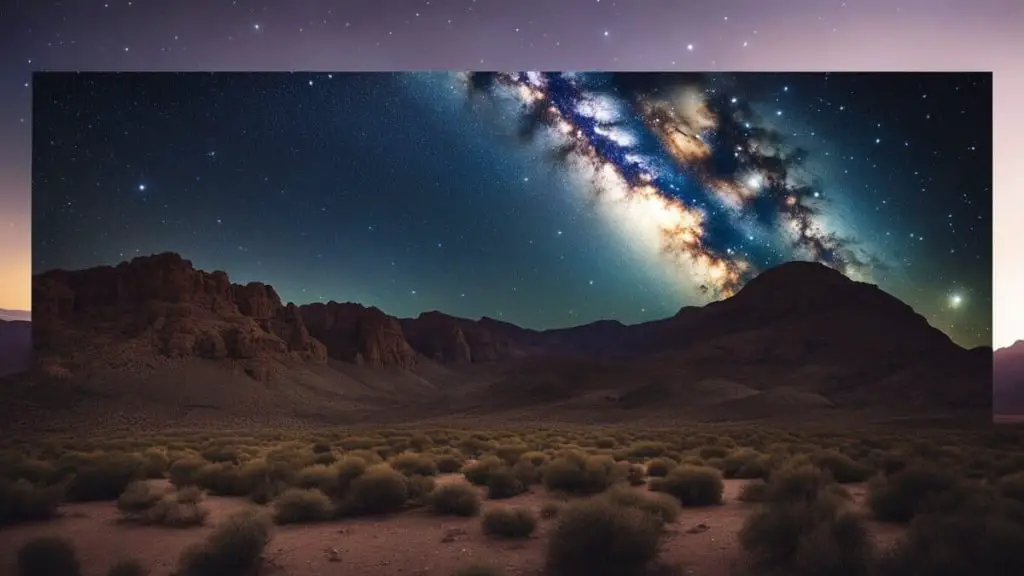
I’ve found that Nevada offers unparalleled opportunities to witness the Milky Way’s Galactic Center.
So, how do you enjoy this celestial extravaganza? First, you must determine the right time to see the Galactic Center.
The optimal period is during the “Milky Way Season,” when the most vivid part of the galaxy, the Galactic Bulge, is visible in the sky.
As you can see below, the Milky Way galactic center is visible nearly every month, but only during certain hours. So, when is Milky Way Season in Nevada?
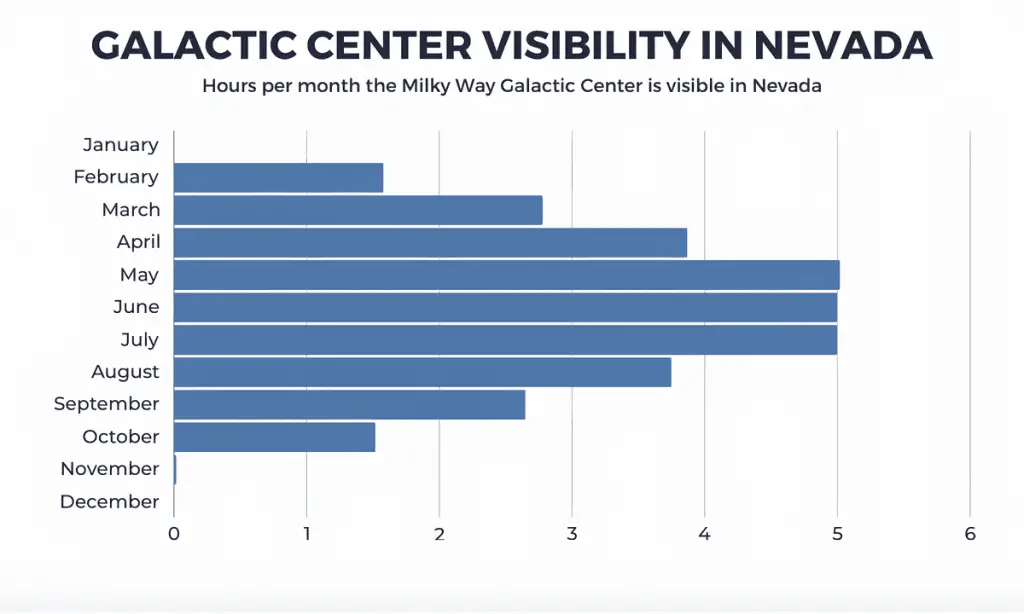
The best months are April to August when the Milky Way core is visible for about four or more hours.
Here are the Milky Way Galactic Center rise and set times for the middle of each month in Nevada.
When Can You See the Milky Way in Nevada?
- January not visible
- February 3:34 am – 5:09 am
- March 2:40 am – 5:27 am
- April 0:39 am – 4:31 am
- May 10:41 pm – 3:42 am
- June 10:19 pm – 3:19 am
- July 10:09 pm – 3:09 am
- August 9:23 pm – 1:08 am
- September 8:26 pm – 11:05 pm
- October 7:37 pm – 9:08 pm
- November 6:05 pm – 6:06 pm
- December not visible
From my experience, the best stargazing comes from heading to spots untouched by city lights.
FREE STARGAZING CHECKLIST
My 5-page Stargazing Checklist will enhance your astronomical observations.
Follow this free checklist to navigate the night sky with confidence, clarity, and a sense of preparedness for a rewarding stargazing experience.

Even near a bustling city like Las Vegas, I’ve been amazed at how a 30-minute drive can lead to the perfect stargazing spot. Venture deeper into rural Nevada, and you’ll discover some of the darkest locations to marvel at the night sky.
Here are a few pointers to keep in mind:
- Check the weather: I always ensure clear skies are forecasted to guarantee the best stargazing experience.
- Bring binoculars: I’ve seen incredible galaxy details through the lens of my trusty binoculars.
- Use a stargazing app: I rely on apps to help identify celestial objects and maximize my night under the stars.
Best Times to See the Milky Way in Nevada
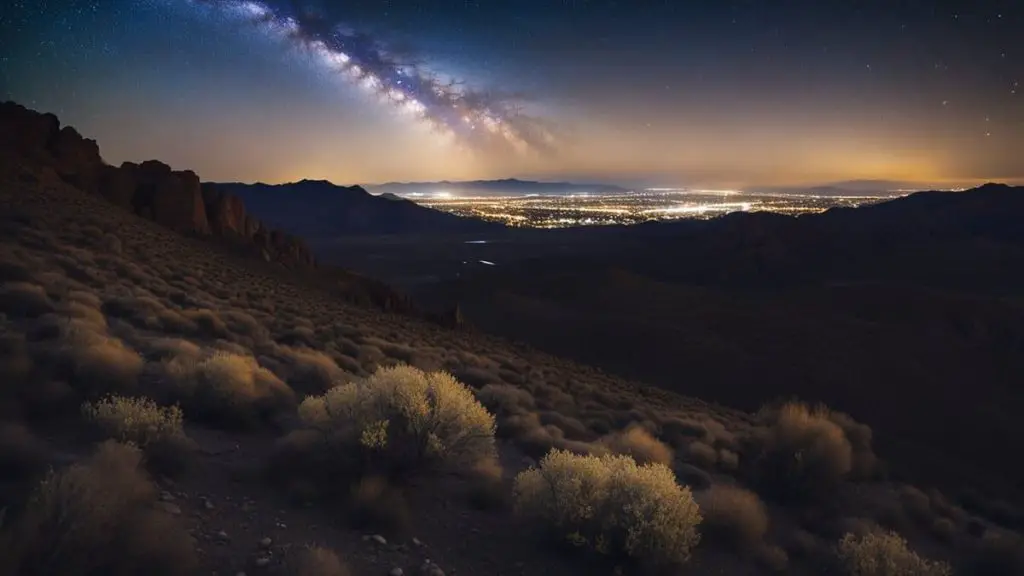
Understanding the Moon Phase
When planning to view the Milky Way in Nevada, it’s essential to consider the moon phase. The moon’s brightness can make it challenging to see the Milky Way clearly.
To find the best viewing time, I keep a close eye on the moon’s cycle. The ideal time to stargaze is during the new moon when the moon is not visible in the sky. This allows for maximum darkness, making the Milky Way more visible to the naked eye.
Importance of Moonless Nights
Moonless nights are crucial for observing the Milky Way in its full glory. During these times, I’ve watched the Milky Way rise in the east-southeast and arc majestically overhead before setting in the west-southwest.
Here are a few tips to help you catch the Milky Way on a moonless night:
- Check the weather: Choose a clear night with no clouds, as they can obstruct your view.
- Find a dark location: Nevada has several dark sky locations, such as Granite Mountain Reservoir and Massacre Rim, offering optimal stargazing conditions.
- Arrive early: Give your eyes time to adjust to the darkness. The process can take up to 30 minutes.
- Bring the right equipment: A good pair of binoculars or telescopes can enhance your stargazing experience.
Observing the beautiful Milky Way in Nevada requires some planning. Keep track of the moon phase and choose moonless nights during the right months for the best possible experience.
Nevada’s Recognition as a Dark Sky Destination
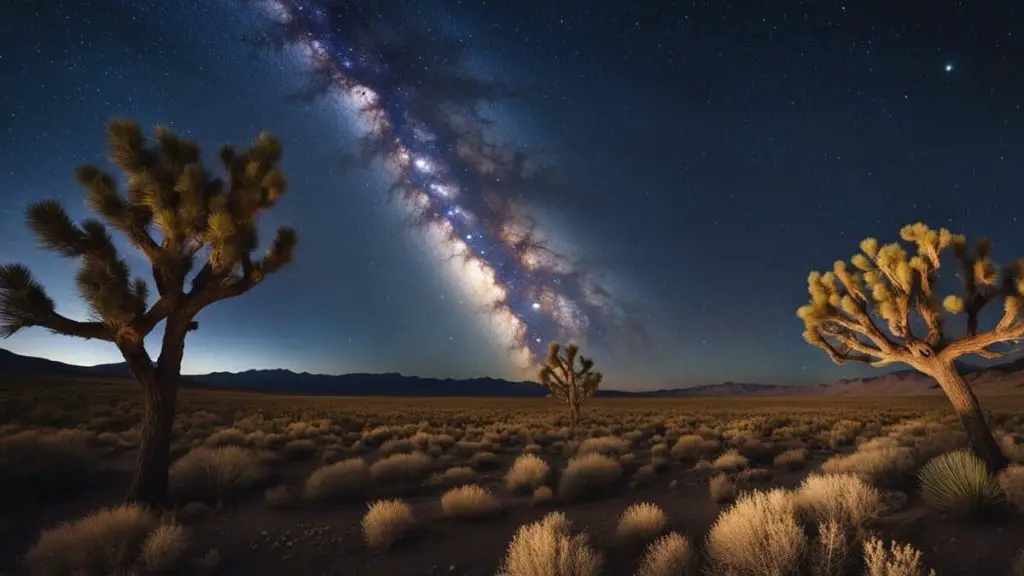
Nevada has gained a reputation as a fantastic destination for dark sky lovers because it’s home to some of the darkest skies in the contiguous United States. This means you can enjoy unparalleled stargazing in Nevada.
Read my article about the Nevada Dark Sky Map
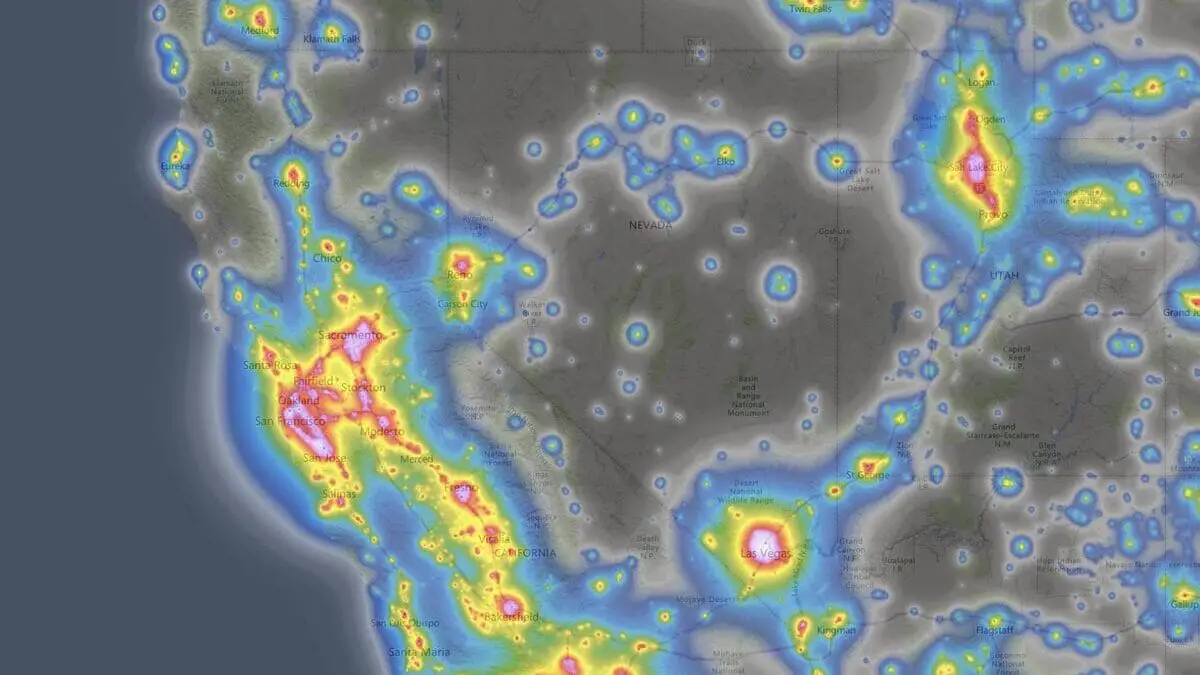
In particular, the International Dark Sky Association has recognized several locations within the state as Dark Sky Parks, which are perfect places for observing the Milky Way and other celestial wonders.
When you plan your stargazing trip in Nevada, include at least one of the certified Dark Sky destinations.
Read my dedicated article for a detailed list of the best stargazing Nevada offers

During your visit, you’ll marvel at the breathtaking celestial show that’s visible. The Milky Way, for example, stretches across the sky in all its splendor, and countless other stars and constellations dazzle in the darkness. Plus, without light pollution, even the faintest stars and galaxies are visible to the naked eye.
So, remember, for a genuinely unforgettable stargazing experience in Nevada, seek out these certified dark sky destinations. You’ll be treated to a celestial symphony of stars, planets, and the magnificent Milky Way that will leave you speechless.
Ideal Locations for Stargazing in Nevada
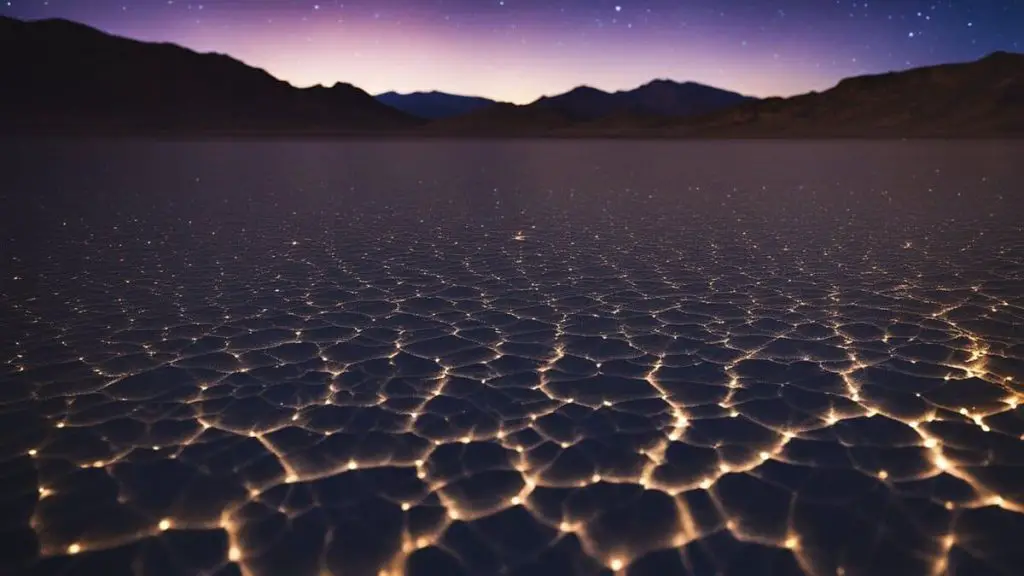
Nevada, known as the Silver State, offers some of the best stargazing spots in the United States. With its vast, open landscapes and minimal light pollution, you’ll have no problem finding the perfect place to gaze at the Milky Way.
In my stargazing adventures, I’ve found some top locations in Nevada:
- Massacre Rim: As a designated Dark Sky Sanctuary, Massacre Rim provides exceptional stargazing opportunities. Located in the remote northern Nevada wilderness, it offers pristine views of the night sky and the Milky Way.
- Tonopah: Boasting some of the darkest night skies in the country, Tonopah is an excellent location for stargazing. Take advantage of visiting the Tonopah Stargazing Park, where you can see unobstructed views of the celestial wonders.
- Great Basin National Park: Nevada’s only national park is home to some of the state’s best stargazing spots. The park offers various ranger-led stargazing programs and the annual Astronomy Festival to help you experience the night sky at its best.
- Black Rock Desert: Known for its unique landscapes, Black Rock Desert is an excellent place for night-sky photographers and stargazers alike. It’s a popular spot for camping under the stars while taking in the Milky Way.
While Las Vegas may seem like an unlikely stargazing destination due to its bright lights, don’t worry – there are still opportunities to see the stars.
To escape the city lights, consider visiting nearby spots like Red Rock Canyon National Conservation Area or Valley of Fire State Park.
Understanding Light Pollution
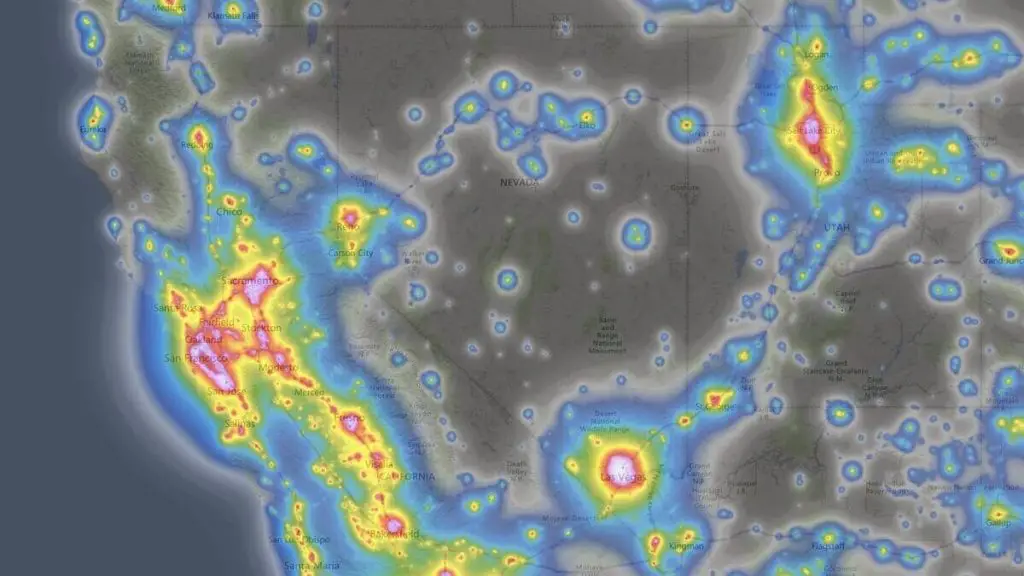
Light pollution is a significant factor in stargazing and viewing the Milky Way. It can make it difficult or even impossible to see the night sky in its full glory.
To help you understand light pollution, here are a few key points:
- What is light pollution? It occurs when artificial light from cities and other sources makes the night sky less visible and decreases the visibility of celestial objects.
- Why is it bad? Apart from making stargazing difficult, light pollution can also have adverse effects on migratory birds and nocturnal animals, disrupting their feeding, reproduction, and migration habits.
To make the most out of your stargazing experience in Nevada, it’s essential to choose a location with minimal light pollution, like an International Dark Sky Park.
Considering light pollution and selecting the right spot, I’ve had unforgettable stargazing experiences in Nevada.
Nevada’s Night Sky and its Astronomical Wonders
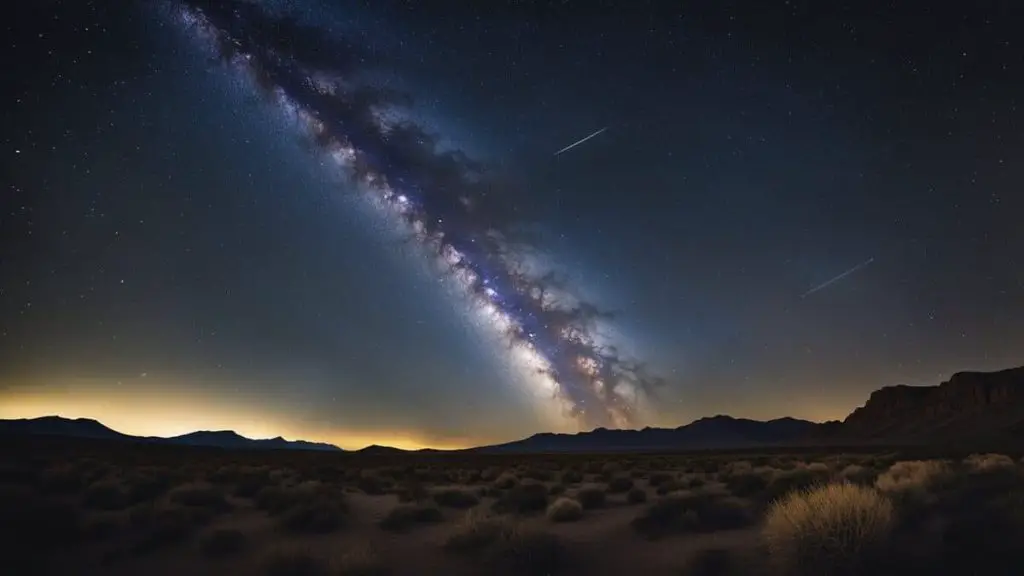
Nevada’s night sky offers you a breathtaking view of numerous celestial wonders. Here, I’ve spent many nights observing fascinating planets, identifying constellations, and spotting shooting stars.
Observing the Planets
Nevada’s dark skies make it an ideal location to view planets like Mars, Jupiter, and Saturn.
To make the most of your planetary observation experience:
- Choose a location with minimal light pollution, such as a Dark Sky Park.
- Bring binoculars or a telescope to get a better view of planets and their distinguishable features.
- Investigate the best times to view specific planets, as their visibility can change throughout the year.
Identifying Constellations and Galaxies
Nevada’s clear, dark skies are perfect for spotting constellations such as Orion, Ursa Major, and Cassiopeia.
To locate these celestial formations:
- Learn the general shape and pattern of the constellation you’re looking for using a star chart or stargazing app to help pinpoint the constellation’s location.
- Look for the brightest stars in the constellation, as they’re easier to spot.
In addition to constellations, you might catch glimpses of our neighboring galaxies. For example, the Andromeda Galaxy is visible to the naked eye on moonless nights away from city lights.
Spotting Shooting Stars
Watching shooting stars in Nevada’s night sky can be an unforgettable experience.
To increase your chances of witnessing a shooting star:
- Check for an upcoming meteor shower, as numerous shooting stars can be seen during these events.
- Find a spot far from city lights to optimize your night sky visibility.
- Be patient, as shooting stars are fleeting and can appear anytime.
Nevada’s night sky is truly a treasure trove of astronomical marvels. Remember to stay curious, as there’s always more to discover and enjoy as you embark on your stargazing adventures.
Planning Your Stargazing Trip
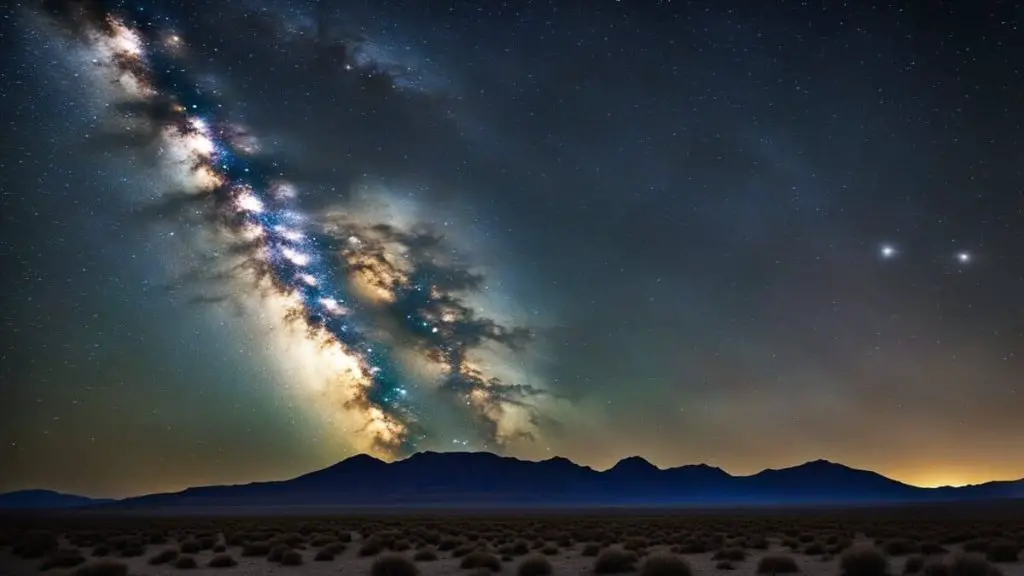
Essentials
When planning your stargazing trip in Nevada, proper preparation is critical. For a comfortable and memorable experience, here are the essentials to pack:
- A sturdy tent
- Warm sleeping bag and pad
- Weather-appropriate clothing layers
- Flashlight or headlamp (with a red-light function for preserving night vision)
- Food and cooking supplies
- Plenty of water
- Bug spray
By ensuring you have these items, you’ll be able to immerse yourself in Nevada’s remarkable night skies fully.
Utilizing Telescopes and Binoculars
To enhance your experience, consider bringing a telescope or binoculars, which have been invaluable in my stargazing.
These tools will help you to explore celestial objects like star clusters and galaxies.
When using a telescope, keep the magnification low (around 20-50x) to keep the image bright and clear. Binoculars are an excellent choice for those wanting a more portable option.
Look for binoculars with a 7×50 or 10×50 configuration to balance brightness and magnification.
Considering Astrophotography
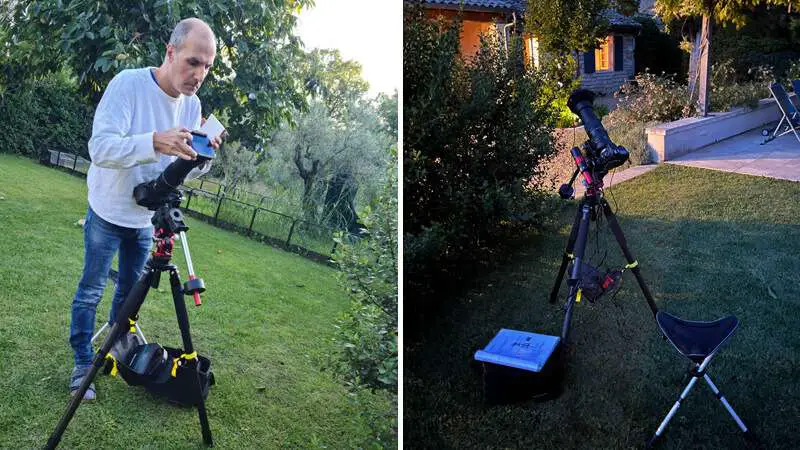
If you are passionate about photography, why not extend your skills to capturing the night sky?
To get started with astrophotography, you’ll need:
- A DSLR or mirrorless camera
- A wide-angle lens (preferably with a fast aperture)
- A sturdy tripod
- A remote shutter release
Using these tools, experiment with long exposures and different camera settings to capture you’ll beauty of the Milky Way.
Guided Star Parties and Festivals
For an unforgettable experience, consider attending a guided star party or an astronomy festival like the Great Basin Astronomy Festival. These events offer expert guidance, informative talks, and the opportunity to connect with other astronomy enthusiasts.
Frequently Asked Questions
What other celestial sights can I capture besides the Milky Way?
Beyond the Milky Way, you can capture stunning images of star clusters, nebulae, and other galaxies. With a good telescope, patience, and clear skies, the cosmos is your canvas.
How do weather conditions affect astrophotography?
Astrophotography depends heavily on clear skies. Cloud cover, humidity, and light pollution can significantly impact the quality of your photos. Always check the weather before planning your stargazing session.
Can I use my regular camera tripod for astrophotography?
Yes, a regular camera tripod can be a good start for astrophotography. However, for long-exposure images, a sturdy tripod is crucial to prevent any movement that could blur the stars in your shots.
Final Words: Milky Way in Nevada
As you venture into the mesmerizing world of stargazing, remember that every star-studded sky offers a new story. Whether it’s the majestic sweep of the Milky Way or the ethereal glow of distant galaxies, your lens is a portal to the universe. Embrace patience, practice, and passion — they’re your best tools. Clear nights and your trusty camera await, so capture the cosmic wonders. Share the celestial tales you’ll tell with every shot you take. The universe is vast, and your journey through it is just beginning.
Keep your eyes on the skies, and happy stargazing in Nevada!




